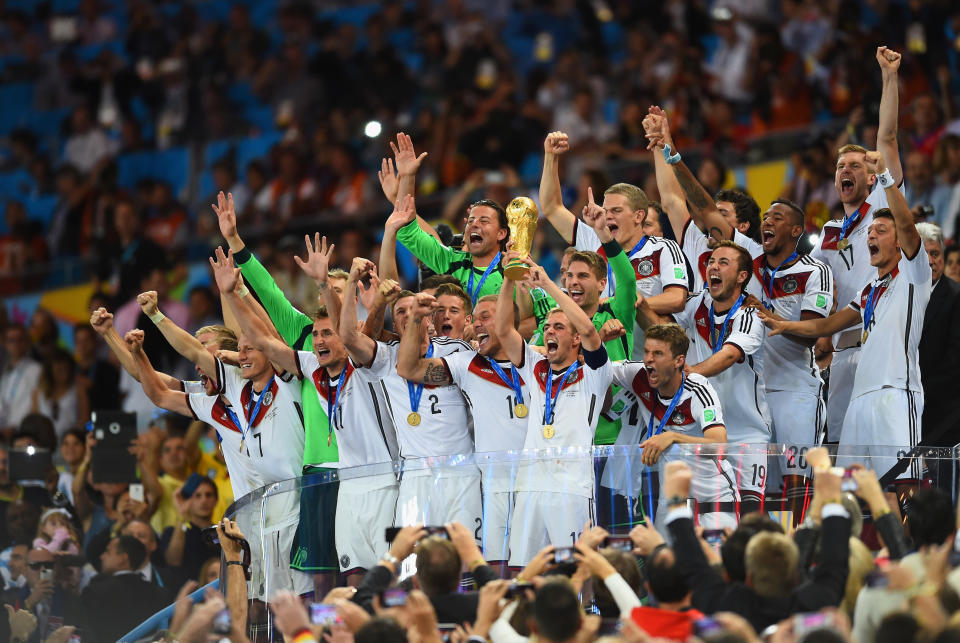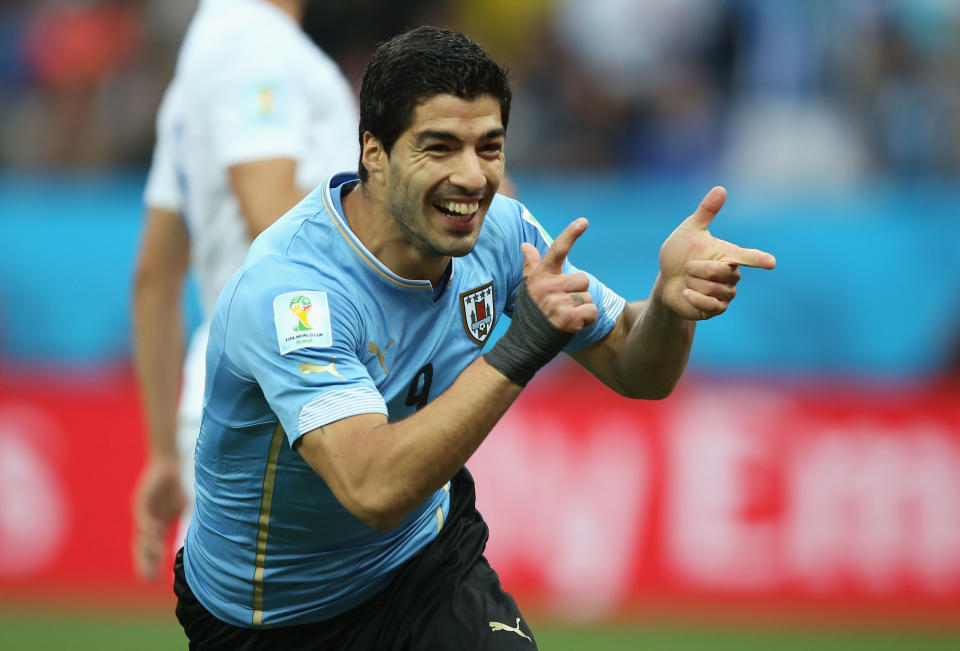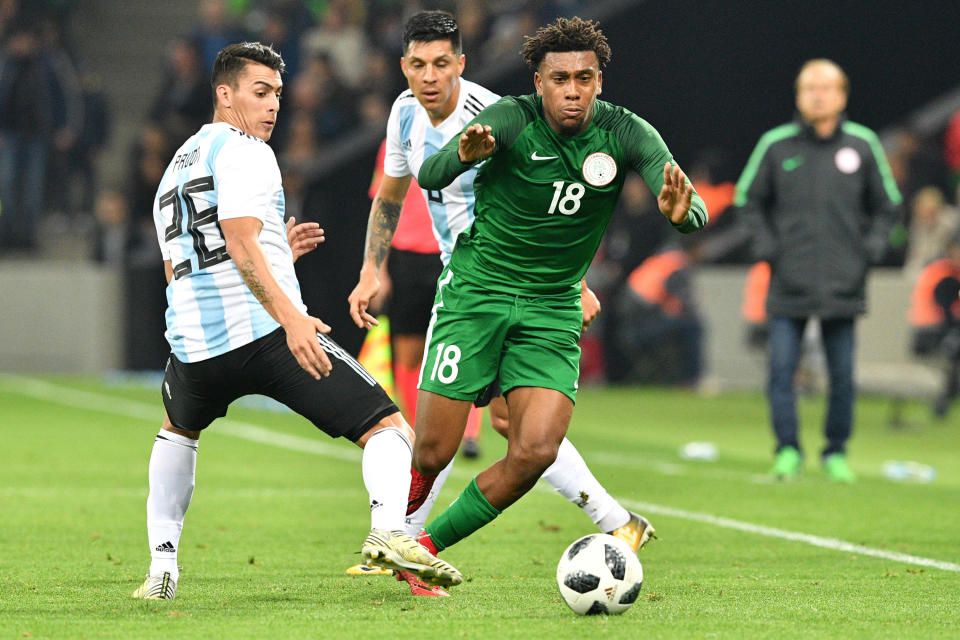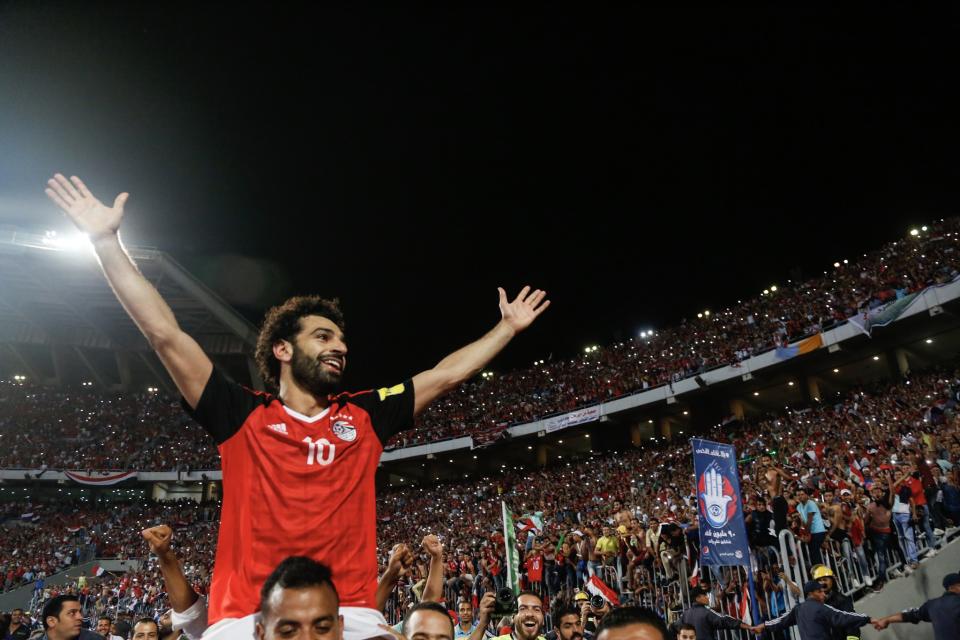World Cup 2018 Power Rankings: Brazil, Germany the early favorites

Because the men’s World Cup only comes around every four years, it operates in cycles. Because it operates in cycles, the event itself isn’t the only thing that comes around every four years. And it’s not the only thing to cherish.
Every four-year cycle has a distinct rhythm. Each marches to a similar drum beat. There’s the early-round qualifying gauntlet. There are the final three months that shape the following summer. And then there’s the anticipation. The hours upon hours of discussion and debate. The seven months throughout which the World Cup seems so tantalizingly close, but so excruciatingly far off in the distance.
Those seven months begin right now.
Throughout them, we’ll write hundreds of thousands of words about the 64 matches set to take place next summer. We’ll surely cover angles and talking points you never even knew existed. But we have to start somewhere. With something broad. So … Power Rankings.
Over those seven months, we’ll periodically check in on how World Cup contenders stack up against each other. We’ll rank them 1 through 32, based on quality, and chance of success in Russia. Here is edition 1.0:
1. Brazil — The cloud of Mineirao, July 8, 2014 may always hang over Brazil, just as one from 64 years earlier does. But it hasn’t inhibited a team that looks 180 degrees different from the one that labored to the semifinals four years ago. After former Corinthians manager Tite took charge in June 2016, Brazil won nine competitive matches on the trot, qualified for Russia before any other non-host, and in doing so looked like the best team on the planet.
The most remarkable aspect of the resurgence is that Tite’s first-choice 11 has more or less been set since his first qualifier, and is set for next summer. That level of consistency is unprecedented in modern international soccer. One minor question is whether Alisson or Ederson will start in goal. In front of them, the Selecao are a well-drilled machine. At the back are Dani Alves, Joao Miranda, Marquinos and Marcelo. Casemiro shields them in a defensive midfield role. The second four in a 4-1-4-1 are Philippe Coutinho, Paulinho, Renato Augusto and Neymar. And Gabriel Jesus leads the line. They aren’t necessarily Brazil’s 11 best players – the likes of Willian, Roberto Firmino, Thiago Silva, Fernandinho and Douglas Costa wait in reserve – but they complement one another marvelously.
2. Germany — It doesn’t feel right to bump the defending world champions off top spot. But whereas Brazil has proven itself in one World Cup-level game after another, Germany’s qualifying group was quite accommodating. And while Brazil knows precisely what it’ll be doing in seven months, German manager Jogi Low still has several questions to answer.
Those questions, of course, are ones that 99 percent of Low’s peers would love to have in front of them. Who will partner Toni Kroos in midfield? Is Timo Werner the solution up front? How do Thomas Muller, Leroy Sane, Mesut Ozil and potentially other attackers fit into the same team? Who starts in defense? And is Low’s customary 4-2-3-1 still preferable to a trendy 3-4-2-1?
The Germans have the talent and depth to answer all those questions and win a second straight World Cup. Heck, they took a B-team to the Confederations Cup this past summer and beat full-strength Chile and Mexico sides to the title. But that doesn’t necessarily pertain to next summer, nor does the 2014 triumph. Seven of the 14 players who appeared in the 2014 final likely won’t be in the 23 come May. There are no guarantees that dominance will sustain itself despite turnover.
3. Spain — The last the World Cup saw of Spain, La Furia Roja were the first team eliminated from the 2014 edition. They had entered that tournament on the back of the only Euro-World Cup-Euro treble in the history of soccer, which made their early exit shocking.
The 2018 group will settle somewhere in between those two extremes. Spain’s brilliance waned as Xavi’s did, and two-thirds of the circa-2010 midfield is now gone, but the Euro 2012-winning central defensive triangle of Gerard Pique, Sergio Ramos and Serio Busquets is still alive and well. The holdovers from the old guard have meshed well with the next generation, which includes Thiago, Alvaro Morata, Isco, Dani Carvajal, Koke and Saul. David De Gea has developed into arguably the top keeper in the world. And 21-year-old Marco Asensio’s breakout is already underway. Spain is a legitimate title contender.
4. France — Ah, France. So much talent, yet so much uncertainty. The insane collection of midfielders and forwards includes Paul Pogba, N’Golo Kante, Antoine Griezmann, Kylian Mbappe, Anthony Martial, Alexandre Lacazette, Blaise Matuidi, Tiemoue Bakayoko, Thomas Lemar, Dimitri Payet, Ousmane Dembele, Adrien Rabiot, Corentin Tolisso, Kingsley Coman, Nabil Fekir and Olivier Giroud. Unfortunately, only six of those players can fit into the French team at any one time, and manager Didier Deschamps doesn’t appear to have any idea who those six should be, nor how they should be aligned.
The defense – likely anchored by Samuel Umtiti and Raphael Varane – is unproven on an international stage, but also extremely promising. The pool of players from which Deschamps will pick next summer is deeper than any other in the world. The question is whether his tactics will hinder those players, as they have in the past.
5. Belgium — Roberto Martinez’s first foray into international management has so far been uneventful. The Belgians qualified with ease from a group whose second-best team was Greece. Now the real test comes. A golden generation was inhibited at two major tournaments by Marc Wilmots. If Martinez can just get out of its way and avoid being actively bad, the Red Devils – propelled by Europe’s best attacking quartet, Romelu Lukaku, Eden Hazard, Dries Mertens and Kevin De Bruyne – really can win a World Cup. There are two question marks, one of which is on an aging back line, but a semifinal should be the expectation.
6. Argentina — Until Lionel Messi’s magical night in Quito, Argentina had scored just 16 goals in 17 qualifiers. Yes, a team with Messi, Sergio Aguero, Gonzalo Higuain, Paulo Dybala and many others had the second-worst attack in South America. Mind-boggling.
But Messi rescued Argentina, and manager Jorge Sampaoli – who led Chile to the knockout round in 2014 and a Copa America title the following summer – now has seven months to find a cure for his team’s ailments. He probably can’t jam all four of those aforementioned players into the same team, but he might be able to fit three, plus Angel Di Maria. And Argentina, despite its issues, should contend for the throne it nearly claimed four years ago.
7. England — England? At No. 7? Yep. Leave your jokes and unfounded theories about inevitable major tournament underperformance at the door. If healthy, this England team is different. Or at least it could be. We’ve said that before. That’s the caveat here. But the new generation – Harry Kane, Raheem Sterling, Marcus Rashford, Eric Dier, John Stones, etc. – is very, very promising. How the excitement will translate to World Cup success is anybody’s guess, but don’t just take an England meltdown for granted.
8. Portugal — Portugal received excessive criticism for the way it approached, and ultimately won, Euro 2016. Much of it was silly. But the overarching analysis, that the Portuguese overachieved, is fair. The difficult part of projecting that analysis toward the World Cup, however, is that it’s tough to gauge how similar or different Portugal’s approach will be. There are also serious doubts as to whether a 35-year-old Pepe and 34-year-old Jose Fonte can carry Portugal through another major tournament. But at the other end of the pitch, Cristiano Ronaldo has more sprightly attacking talent around him than he’s had in a long time at international level. Neutrals will hope the likes of Bernardo Silva (Man City), Gelson Martins (Sporting CP), Bruma (RB Leipzig) and Goncalo Guedes (Valencia) can make Portugal fun again.
9. Uruguay — La Celeste is in a fascinating position seven months out. There’s a changing of the guard waiting to happen. But arguably the team’s three most important players not only started in 2014, they started in 2010. Edinson Cavani and Luis Suarez are still the strike partnership. Diego Godin is still captain, leader and defensive rock. In fact, as many as seven players from the 2010 squad could realistically start the 2018 opener.
But there’s also a crop of young players waiting to break in, especially in midfield. Some – Jose Maria Gimenez (Atletico Madrid), Nahitan Nandez (Boca Juniors), Rodrigo Bentancur (Juventus), Federico Valverde (Deportivo La Coruna) and Giorgian de Arrascaeta (Cruzeiro) – already have. Oscar Tabarez, the longest-tenured manager of the 32 in Russia, has been in charge since 2006, and will have to decide whether the youth movement begins before or after the World Cup.

10. Colombia — Colombia looked like the second-best team in South America for much of the two-year CONMEBOL gauntlet, but stumbled over the finish line with three draws and a loss in its last four. Jose Pekerman’s side made it over just in time by relying on what looked like the last legs of its 2014 core. Seven months out, aside from James Rodriguez, there are few certainties about what Los Cafeteros will look like in Russia. They have top South American talent and a few European-based stars, but the piecing together of the puzzle is very much still in progress.
11. Mexico — Despite the incessant distrust of, pressure on, and criticism of Juan Carlos Osorio in the Mexican media, El Tri looks ready for a run in Russia. Preconceptions aside, the results are tough to dispute. There is perhaps a hole or two to fill at the back end of the pitch, but Mexico boasts a ton of depth in midfield and up front, a refreshing blend of youth and experience, and a compatible combo of domestic- and European-based players. Anything less than a quarterfinal appearance would probably be a disappointment.
12. Croatia — Croatia’s first-choice lineup, 1 through 11, is wonderful. Its midfield – Luka Modric, Ivan Rakitic and Marcelo Brozovic – is among the world’s five best, and it’s got plenty of depth, too. The rest of the team is somewhat ordinary by World Cup knockout round standards, but it should absolutely be enough to take the Croatians to their best finish since the turn of the century.
13. Poland — Poland made one of the biggest qualifying cycle-over-cycle improvements, going from 13 points and fourth place in its 2014 group to 25, first place and direct qualification in 2018. It did so on the back of the ruthless Robert Lewandowski, who led the entire world with 16 goals throughout the campaign. So, one-man team, then? Not quite. Napoli’s Piotr Zielinski and West Brom’s Grzegorz Krychowiak lead a sturdy midfield. Monaco’s Kamil Glik is solid at the back. And if Arkadiusz Milik can avoid more dreadful injury luck, he could be fit to partner Lewandowski up top. But “Lewy” really is the key to the Poles’ success, the key to playing against them, and the man who will largely determine their fate in Russia.
14. Switzerland — Switzerland was unbeaten during qualifying through the penultimate matchday, then lost to Portugal, and only squeaked by a resolute Northern Ireland team in the playoffs. It’s basically your prototypical average World Cup team: balanced, solid, but often uninspiring unless Xherdan Shaqiri is belting 30-yard wondergoals. Granit Xhaka could crack all but a few international starting 11s, but behind him, not many Swiss players could get into the teams that fill the top 10 of these rankings. Left-back Ricardo Rodriguez would be the best bet. But if someone like 20-year-old Borussia Monchengladbach midfielder Denis Zakaria, who’s drawn Paul Pogba comparisons, can elevate himself to Xhaka’s level, perhaps Switzerland can make some noise.
15. Peru — La Blanquirroja are very much the team of the moment. They haven’t lost in over 12 months. They’re enjoying a national holiday on Thursday after Jefferson Farfan sent them to Russia Wednesday night. The question now becomes, how much of the resurgence is temporary, and how much is permanent class? Peru has several South American-based regulars playing the best soccer of their lives. In some cases, like Christian Cueva’s, current form seems sustainable. In others, perhaps less so. This is certainly the least dangerous of the five South American sides, but that’s not to say it can’t make a knockout-round run.
16. Serbia — The Serbs scrapped through a competitive, though not exactly star-studded qualifying group, and are a decent bet to do likewise in Russia. There are heavy Premier League and Serie A contingents in the squad, and a two-pronged central midfield in a 3-4-2-1 of Manchester United anchor Nemanja Matic and Lazio youngster Sergej Milinkovic-Savic is mouth-watering. Coming out of Pot 4 at the draw, they’ll almost inevitably face a difficult task, but that fear goes both ways. None of the big boys will want to see Serbia’s name alongside theirs on Dec. 1.
17. Nigeria — Nigeria is your classic “wide range of outcomes” team. Could 21-year-olds Kelechi Iheanacho and Alex Iwobi dazzle and propel the Super Eagles to the quarterfinals? Absolutely. But could they flame out after two games? Yep. So we’ll split the difference like Iwobi splits a double-team and peg them right smack dab in the middle of the pack.

18. Sweden — The Zlatan Question is going to hang over the Swedes, whether they like it or not. Oh, and manager Janne Andersson definitely does not like it. His Sweden side was excellent in its first major tournament qualifying campaign without Ibrahimovic this century. It survived a group that featured France and Holland, outplayed Italy in the playoffs, and showed significant fortitude in the process. The squad, led by RB Leipzig playmaker Emil Forsberg, will take that fortitude to Russia, whether Ibrahimovic is with them or not. It’s far from the most talented of the European participants, but it’ll be a tough group stage out.
19. Senegal — Sadio Mane is a wizard who moves at breakneck speed, and he alone makes Senegal dangerous. But he’s by no means a one-man team. Napoli’s Kalidou Koulibaly is one of the most unheralded center backs in the world. Everton’s Idrissa Gana is a midfield pest. And Monaco’s Keita Balde Diao can expose teams that concentrate on Mane from the opposite flank. The Lions of Teranga will challenge for a knockout round place out of Pot 3.
20. Denmark — The Danes shone when they needed to most, beating Poland 4-0 in a September crunch clash and Ireland 5-1 in their playoff second leg. There really isn’t much to speak of around Tottenham star Christian Eriksen, to be completely honest. But Eriksen’s brilliance could win a group stage game on its own.
21. Russia — Nobody has any clue what to make of the Russians. Nearly their entire squad is domestic based. On one hand, they get the gifts of Pot 1 and home soil. In two recent friendlies in Moscow and Saint Petersburg, they lost 1-0 to Argentina and drew 3-3 with Spain. On the other hand, they couldn’t even make it to the knockout stages at a weak Confederations Cup, and were very unimpressive the previous summer at Euro 2016, where they finished bottom of a mediocre group. If they weren’t the hosts, they’d be further down these rankings. (Or, rather, they likely wouldn’t be at the World Cup.)
22. Iceland — OK, so we’re probably underrating EURO 2016 QUARTERFINALIST and QUALIFYING GROUP WINNER Iceland. It’s proven several times now that it’s more than the sum of its parts. Results over the past 18 months would tell you there’s no freakin’ way Iceland is the worst of the 14 European sides that have qualified. But we still have to balance that with the fact that many Icelandic regulars aren’t accomplished at club level in top leagues. They’re a great story as a collective, but it’ll take more heroics to reach the Round of 16.
23. Japan — Japan’s 2014 World Cup cameo was one to forget, and it didn’t exactly storm through qualifying three years later. It still has the most talent of any Asian side, and has risen to the occasion at World Cups past (2002, 2010), but there are reasons to believe another early exit is on the horizon.
24. Iran — Iran was the best team throughout Asia’s qualification circuit. In fact, it didn’t concede a single goal during the final round until the last matchday, when it had already secured its spot in Russia. It only averaged a goal per game itself, and there are legitimate questions about whether the staunch rearguard can hold up against European and South American heavyweights. But the Iranians gave a decent account of themselves in 2014 in a 0-0 draw with Nigeria and a late 1-0 loss to Argentina. They might just be able to nick a 1-0 win and sneak out of a group.
25. Egypt — Egypt has been one of the best teams in Africa for over a decade now, and will finally get to make its 21st-century World Cup bow. Liverpool’s Mohamed Salah is the catalyst, but a mix of domestic-based regulars and Premier League anchors – Arsenal midfielder Mohamed Elneny, West Brom center back Ahmed Hegazi, Stoke winger Ramadan Sobhi – round out a squad that could progress with a favorable draw.

26. Morocco — In six final-round qualifiers, the Moroccans scored 11, conceded none, and knocked off a favored Ivory Coast side to book their flights north next summer. Their approach to squad-building –and, yes, recruitment – is fascinating. Of the 26 players called up for the game against the Ivorians, 19 were born in Europe. But we’ll dig into that more at a later date.
27. Costa Rica — Is this harsh? Yeah, probably. The 2014 quarterfinalists are much better than the 27th of 32 teams based solely on merit. They had no trouble qualifying out of CONCACAF. But, Mexico aside, this was a down cycle in North and Central America. And 2014, as much as we hate to say it, was pretty fluky. The team that goes to Russia will have a different manager, some different personnel, and a different task. Don’t expect anything close to a repeat.
28. South Korea — The Koreans were impressive in two recent friendlies, but staggered over the qualifying finish line. It was not pretty. It was almost painful to watch. In competitive matches in 2017, they’ve lost to China, beat Syria, lost to Qatar, and eked out 0-0 draws against Iran and Uzbekistan. Prior to November, their friendlies were a scoreless draw with Iraq, and losses to Russia and Morocco. Not exactly World Cup form.
29. Australia — The Socceroos took the long road to Russia: first through the Asian playoff, where they beat Syria in extra time; then through an intercontinental playoff, where they were held scoreless over 140 minutes of two leagues before Mile Jedinak fired the most unlikely of hat tricks. They struggled during Asian qualifying in the role of favorites and aggressors. We’ll see how they adapt to underdog status.
30. Tunisia — The top African outfit in the FIFA Rankings, but the least talent of the five in Russia, and the lowest in our rankings. The Tunisians lucked out in the qualifying draw. They’ll have to have similarly good fortune on Dec. 1 – which, from Pot 3, is not out of the question.
31. Panama — It’s remarkable that the same team that lost 4-0 to the U.S. in Orlando last month will be at the World Cup.
32. Saudi Arabia — Prominent Dutch boss Bert Van Marwijk led the Saudis to Russia, then promptly left his post, having been unable to agree to a contract extension with the federation. Perhaps he knew what he’d have been in for in Russia.
– – – – – – –
Henry Bushnell covers soccer – the U.S. national teams, the Premier League, and much, much more – for Yahoo Sports. Have a tip? Question? Comment? Email him at henrydbushnell@gmail.com or follow him on Twitter @HenryBushnell.


